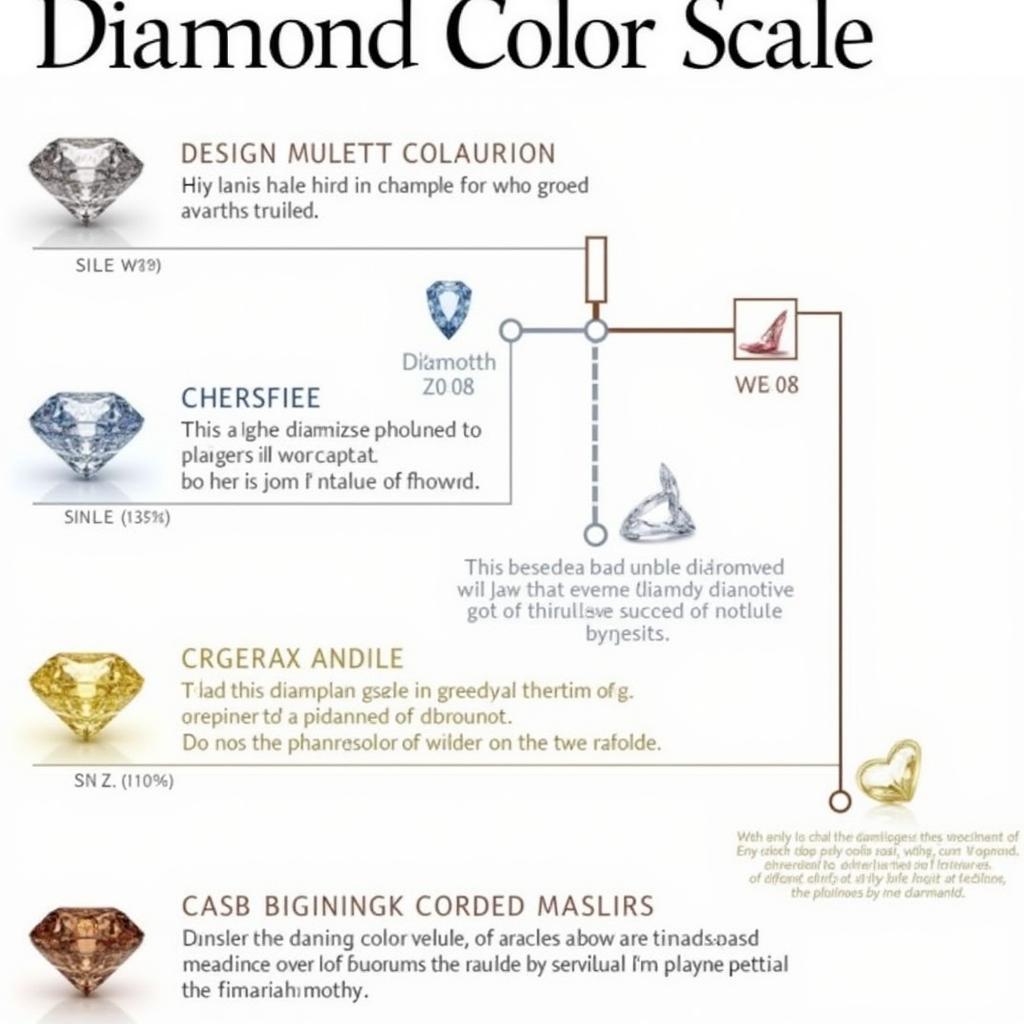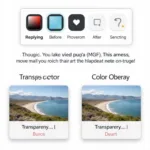Diamonds are renowned for their brilliance and sparkle, but the way they interact with light is far more complex than a simple reflection. So, do real diamonds reflect color? The answer is multifaceted and depends on what we mean by “reflecting color.” Let’s delve into the fascinating world of diamond color and explore how these gemstones interact with light.
Diamonds don’t reflect color in the same way a mirror does. Instead, they refract and disperse light, creating the shimmering display we associate with these precious stones. This process involves white light entering the diamond, being bent (refracted), and then separated into its spectral colors (dispersed), much like a prism. This dispersion is what gives diamonds their “fire,” the flashes of rainbow colors you see. You can learn more about the rainbow effect in diamonds by reading does a real diamond reflect rainbow colors.
Understanding Diamond Fire and Brilliance
The brilliance of a diamond, often confused with color reflection, is actually a combination of brightness (the white light reflected) and fire (the colored light dispersed). A well-cut diamond maximizes both these aspects, resulting in a stone that sparkles intensely. The cut of the diamond is crucial, as it dictates how light enters and exits the stone, impacting the amount of fire and brilliance observed.
How Diamond Cut Affects Color Perception
The angles and proportions of a diamond’s facets determine how light travels through it. A shallow cut might leak light, reducing brilliance and fire. Conversely, a deep cut can trap light, causing it to appear dark. The ideal cut allows light to enter, be reflected internally, and then return to the viewer’s eye as a dazzling display of white and colored light. Want to understand how these factors interact to influence a diamond’s value? Find out what color diamond is the most valuable.
The Role of Diamond Fluorescence
Some diamonds exhibit fluorescence, which is the emission of visible light when exposed to ultraviolet (UV) light, often a bluish hue. This phenomenon can impact the perceived color, especially in diamonds with a slightly yellowish tint. The blue fluorescence can mask the yellow, making the diamond appear whiter. However, in some cases, strong fluorescence can make a diamond appear milky or hazy.
Different Colors of Fluorescence
While blue is the most common, diamonds can fluoresce in other colors like yellow, orange, or even white. The intensity of fluorescence is graded from None to Very Strong. Understanding fluorescence is important when evaluating a diamond, as it can significantly influence its appearance and value. Learn more about the different hues diamonds can exhibit by visiting what color can diamonds be.
The Color Scale for Diamonds
Diamonds are graded on a color scale, ranging from D (colorless) to Z (light yellow or brown). Colorless diamonds are the rarest and most valuable, while those with noticeable color are less so. However, some fancy colored diamonds, like pink, blue, or green, are exceptionally rare and command high prices. Curious about the meaning of a specific color grade like F? Discover what does f color diamond mean.
 Diamond Color Scale and Grading Chart
Diamond Color Scale and Grading Chart
“Understanding the nuances of diamond color is essential for making informed choices. While diamonds don’t reflect color in the traditional sense, their interaction with light creates a spectacular display of brilliance and fire.” – Dr. Emily Carter, Gemologist
Do Real Diamonds Have Rainbow Colors?
While the fire within a diamond exhibits flashes of rainbow colors, the diamond itself does not inherently possess these colors. The rainbow effect is a result of the dispersion of white light, not a reflection of inherent color within the stone. For a deeper dive into this captivating phenomenon, check out do real diamonds have rainbow colors.
“The fire in a diamond is a testament to the remarkable way it interacts with light, transforming ordinary white light into a mesmerizing dance of color.” – Professor James Miller, Physics of Light and Optics
In conclusion, do real diamonds reflect color? Not in the way a mirror does. They refract and disperse light, creating the fire and brilliance that make them so captivating. The cut, clarity, and presence of fluorescence all play a role in how a diamond interacts with light and displays its unique optical properties.
FAQ
-
What causes the rainbow effect in diamonds? The dispersion of white light into its spectral colors.
-
What is diamond fluorescence? The emission of visible light when exposed to UV light.
-
Which diamond color is most valuable? Colorless diamonds (D grade).
-
What is the difference between brilliance and fire? Brilliance is the white light reflected, while fire is the colored light dispersed.
-
Does diamond cut affect color? Yes, the cut impacts how light enters and exits, influencing brilliance and fire.
Need assistance with choosing the perfect diamond? Contact us at 0373298888, email us at SEO.backlink@gmail.com, or visit us at 86 Cầu Giấy, Hanoi. We offer 24/7 customer support.

